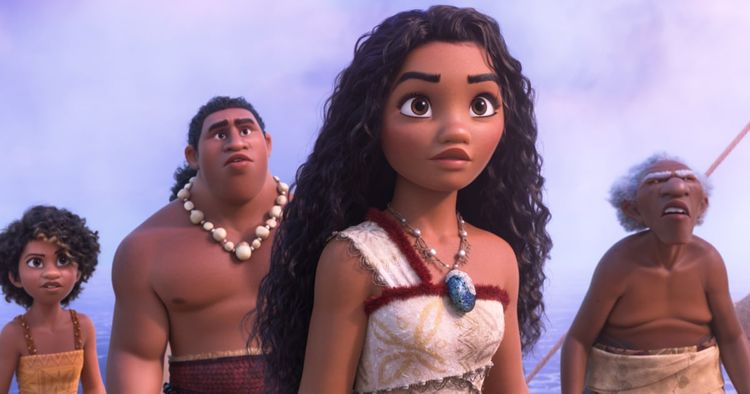'Moana 2' makes history by releasing Maori-language version ...

“Moana 2” is setting sail to movie theaters and making history in the process.
The movie is the first Disney animated feature to release an Indigenous-language version alongside its English counterpart.
The Wednesday global premiere will be accompanied by “Moana 2 Reo Māori,” a special release Thursday in theaters in New Zealand, featuring voiceovers in the indigenous Polynesian language.
The title translates to "Moana 2 Māori language." The language is sometimes referred to as just "te reo" or "reo Māori."
“Moana 2” and “Moana 2 Reo Māori” reunite Moana — having just received an unexpected call from her wayfinding ancestors — with Maui three years later for a new seafaring adventure.
The original “Moana” was also translated into Māori, and both the first and second incorporate Tairāwhiti, which is one of several Māori dialects.
“That’s the tribe I’m from. It’s also coastal,” director Tweedie Waititi said. “So it makes sense, because we are people of the sea. We live on the sea, we live by the sea and also we’re very much connected to the sea,”
Waititi said she was careful when creating a haka, or a ceremonial Māori dance, for the movie. The haka recently went viral after Māori lawmakers performed one in the New Zealand Parliament to protest a proposed bill regarding Indigenous people.
“I suppose we’re going through some very big trials at the moment with our culture and our language at the moment. Haka is the way we express ourselves,” Waititi said.
Waititi was also part of a team of cultural experts who guided filmmakers in creating “Moana.” Disney’s creative team created the collective of Pacific Islander cultural experts while studying Polynesian culture to ensure the region was accurately represented.
“When you’re putting in things like haka and stuff, you’ve got to make sure that, you’ve got to understand that the whole world’s gonna then possibly learn that haka — possibly do that haka. And so you need to make it so that people are culturally safe, spiritually safe,” Waititi said.
The Māori people are indigenous to New Zealand, or in the Māori language, Aotearoa. The Māori language remains on UNESCO’s Atlas of Endangered Languages. Revitalization efforts have been helpful in ensuring that the language doesn’t go extinct, but its “long-term future remains uncertain,” according to UNESCO.
“Our language is coming back from a certain death … I don’t think even 10 years back that our elders dreamed that there’ll be any Disney films in our language. Now, we’re up to six,” Waititi said.
In 1972, Māori people worked together to deliver the Māori language petition to the New Zealand Parliament. The petition, which garnered more than 30,000 signatures, urged the government to offer the Māori language in schools, and implement courses teaching Māori culture and history in schools with larger Māori populations.
“This is the full-circle moment we’ve been working toward — our dream to see te reo Māori normalized on cinema screens alongside English,” Matewa Media producers Chelsea Winstanley and Mia Henry-Teirney said in a press release.
Other Disney animated films have been translated into te reo Māori after their English release, such as the original “Moana,” “Coco,” “The Lion King,” “Frozen,” and, most recently, “Encanto.” The translated films, as well as “Moana 2 Reo Māori,” were produced by both Walt Disney Animation Studios and Matewa Media, a New Zealand-based media organization dedicated to Māori storytelling.
“Our work aims to honor the legacy of those who fought tirelessly for the survival of our language,” Waititi said.
Kaitlyn Schwanemann
Kaitlyn Schwanemann is an intern for NBC News.









































